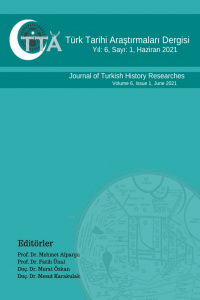Ortaçağ Avrupa Tarihinde Göçebe Unsuru
<!--
/* Font Definitions */
@font-face
{font-family:"Cambria Math";
panose-1:2 4 5 3 5 4 6 3 2 4;
mso-font-charset:0;
mso-generic-font-family:roman;
mso-font-pitch:variable;
mso-font-signature:-536870145 1107305727 0 0 415 0;}
@font-face
{font-family:Calibri;
panose-1:2 15 5 2 2 2 4 3 2 4;
mso-font-charset:0;
mso-generic-font-family:swiss;
mso-font-pitch:variable;
mso-font-signature:-536870145 1073786111 1 0 415 0;}
/* Style Definitions */
p.MsoNormal, li.MsoNormal, div.MsoNormal
{mso-style-unhide:no;
mso-style-qformat:yes;
mso-style-parent:"";
margin-top:0cm;
margin-right:0cm;
margin-bottom:10.0pt;
margin-left:0cm;
line-height:115%;
mso-pagination:widow-orphan;
font-size:11.0pt;
font-family:"Calibri",sans-serif;
mso-ascii-font-family:Calibri;
mso-ascii-theme-font:minor-latin;
mso-fareast-font-family:Calibri;
mso-fareast-theme-font:minor-latin;
mso-hansi-font-family:Calibri;
mso-hansi-theme-font:minor-latin;
mso-bidi-font-family:"Times New Roman";
mso-bidi-theme-font:minor-bidi;
mso-fareast-language:EN-US;}
.MsoChpDefault
{mso-style-type:export-only;
mso-default-props:yes;
font-size:11.0pt;
mso-ansi-font-size:11.0pt;
mso-bidi-font-size:11.0pt;
font-family:"Calibri",sans-serif;
mso-ascii-font-family:Calibri;
mso-ascii-theme-font:minor-latin;
mso-fareast-font-family:Calibri;
mso-fareast-theme-font:minor-latin;
mso-hansi-font-family:Calibri;
mso-hansi-theme-font:minor-latin;
mso-bidi-font-family:"Times New Roman";
mso-bidi-theme-font:minor-bidi;
mso-fareast-language:EN-US;}
.MsoPapDefault
{mso-style-type:export-only;
margin-bottom:10.0pt;
line-height:115%;}
@page WordSection1
{size:612.0pt 792.0pt;
margin:70.85pt 70.85pt 70.85pt 70.85pt;
mso-header-margin:35.4pt;
mso-footer-margin:35.4pt;
mso-paper-source:0;}
div.WordSection1
{page:WordSection1;}
-->
Karpat Havzası ve Aşağı Volga, Ortaçağ Avrupa tarihi üzerine güçlü bir
etkisi olan göçebe kabile konfederasyonlarının ve imparatorluklarının bir
zamanlar merkeziydi. Öncekilere gelince Hunlar, Avarlar ve Macarlardan
bahsetmek gerekmektedir. Macarlar 1000 yılında Hristiyanlığı kabul ettiler ve
böylece Latin Avrupa’ya dahil oldular. Hazarlar, Kiev Rusya’sının tarihinde
önemli bir rol oynadı, buna karşılık Altın Orda Rusya’nın teşekkülünde temel
bir etkiye sahipti. Bozkır halkları, ihmal edilmiş bir gerçek olarak,
Avrupa’nın oluşum sürecinde önemli bir rol oynamıştır.
Anahtar Kelimeler:
Ortaçağ tarihi, Ortaçağ Göçebeleri, Hunlar, Avarlar, Macarlar, Hazarlar, Altın Orda
___
- ALTHEIM, F., Attila und die Hunnen, Baden-Baden, 1951.
- ARTAMANOV, M. I., Istorija hazar, Sanktpetersburg, 1962, 2002.
- BÓNA, I., “A népvándorlás kor és a korai középkor története Magyarországon. 1. A hunok [The Age of Migrations and early Middle Ages in Hungary]”, Magyarország története. Előzmények és a magyar történet 1242-ig. I. kötet [The history of Hungary. Preliminaries and Hungarian history to 1242. Vol. I], Ed. Székely, Gy., Budapest, 1984, pp. 265–288.
- BÓNA, I.– CSEH, J.– NAGY, M.– TOMKA, P.– TÓTH, Á., Hunok – Gepidák – Langobardok [Huns – Gepids – Longobards], Szeged, 1993. BROOK, K. A., The Jews of Khazaria, New Jersey–Jerusalem, 1999.
- DUNLOP, D. M., The History of the Jewish Khazars, , Princeton, 1954
- EMECEN, F., “The Conquest of Constantinople. The Period of Sultan Süleyman and the Universal State”, The Turks, Vol. 3, Ed. Güzel, H. C.– Oguz, C. C.– Karatay, O., Ankara, pp. 171–180, 253–271.
- ENGEL, P., The Realm of St. Stephen. A History of Medieval Hungary, 895–1526. Transl. T. Pálosfalvi, Ed. A. Ayton, I.B. Tauris Publishers, London–New York, 2001.
- FODOR, I., In Search of a New Homeland. The Prehistory of the Hungarian People and the Conquest, Budapest = Die grosse Wanderung der Ungarn vom Ural nach Pannonien, Budapest, 1982.
- FRANKLİN, S.– Shephard, J., The Emergence of Rus. 750–1200, London–New York, 1996.
- GOEHRKE, C., Frühzeit des Ostslaventums. Unter Mitwirkung von U. Kälin, Darmstadt, 1992.
- GOLDEN, P. B., “Cumanica I. The Qipčaqs in Georgia”, Archivum Eurasiae Medii Aevi 4, 1984, pp. 45–87.
- ISSN: 2548-091X
- Başlangıç: 2016
- Yayıncı: Fatih ÜNAL
Sayıdaki Diğer Makaleler
Safevi Devleti’nde Şah II. İsmail ve Muhammed Hudabende Dönemlerinde Kızılbaş Hâkimiyeti (1574-1587)
Türkistan Tarihine Dair Bir Litaratür Taraması: The Levant Herald Gazetesi
Ortaçağ Avrupa Tarihinde Göçebe Unsuru
Bilecik'te Bir Ahıska Köyü: Kapanalan
Bilyar Arkeolojik Keşiflerinin 50. Yıl Dönümü: Büyük Şehrin Araştırma Sonuçları ve Sorunları
Grigoriy İvanoviç Çoros-Gurkin (Hayatı, Eserleri ve Altay Türklerinin Bağımsızlığı İçin Mücadelesi)
Türk Tarihi Araştırmaları Dergisi
Safevi Tarih Yazımında Osmanlılar (Şah İsmail ve Şah Tahmasb Devirleri)
